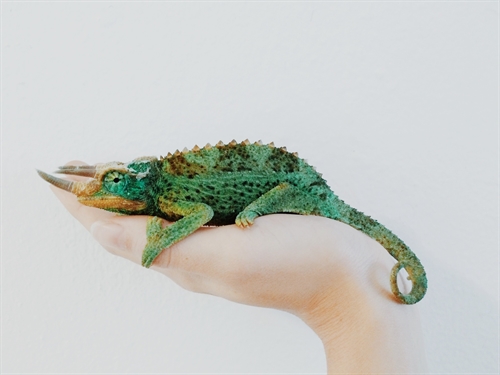Wondering about how to manage a house move with an exotic pet such as a snake, gecko or axolotl? These fascinating animals can be prone to stress, and they have specific environmental requirements, too. So you’ll want to take their needs into account when planning your move. We’ve got some advice and tips to help with that.
Are their any professional organisations that can help me move a large vivarium?
A dedicated animal courier such as PBS will have the experience to help you safely move your pets and their vivarium.
Local branches of interest groups for reptile and amphibian keepers may also have some insights about removals companies who are good with exotic pets. Check the Federation of British Herpetologists to find your nearest reptile club. Members may also share their thoughts about moving house with a vivarium and with pet snakes or frogs. See also our blogpost about moving an aquarium.
Should I keep my pets in the vivarium during the move?
In some cases it may be more practical and less stressful to move your reptiles and vivarium as one unit. But with a very large viv, it might be best to take the pets out for the duration of the move.
Vets who specialise in reptiles and amphibians can give you information about suitable containers for transporting an exotic pet.
Online forums with a group of experienced reptile keepers are also a good place to get advice and insights on moving a vivarium.
Low stress moves for exotic pets
During your move, particularly if it involves a journey of several hours, it’s important to meet all your pet’s requirements for moisture, light and heat, as well as food and water. Transport is stressful for reptiles and amphibians, so ensure they are in the best health before you move them. Keep your pet containers out of direct sunlight, and check on them every few hours. During autumn and winter, avoid leaving your pets in a cold car, particularly if they are sensitive to low temperatures.
Moving a vivarium
Vivariums are very heavy to move and if you have a large one, you’ll need strong, healthy helpers.
Try to keep the vivarium level to avoid stressing the glass plates through twisting. Consider using a sheet of plywood to lift your tank so you don’t put stress on the edges. A furniture dolly is useful if you need to move it any distance over flat ground.
The substrate in your viv is heavy in itself, so consider bagging it and moving it separately.
Pad your vivarium with moving blankets or towels and provide gloves for your helpers to protect their hands from sharp edges.
Unpacking a vivarium
Once you’ve arrived at your new home, unpack your vivarium and check it thoroughly for chips and cracks. It will need a solid, level surface. Leave time in your move schedule for setting up your vivarium and getting the temperature and humidity correct. Then you can put your pets back into it and enjoy watching them settle in.
Keep an eye on your pets for the next few days. Get advice from a vet or an experienced reptile keeper if you are worried about the impact of moving stress on your pet’s feeding or behaviour.
Can I temporarily keep a vivarium in a storage unit?
Storage companies do not allow customers to keep pets and live animals in units. But you can keep a vivarium or aquarium in a storage unit if it is dry, clean and empty, and it will be covered by your insurance with Store and Insure. You can rent a storage unit for a short or long period – but get quotes from several storage companies to be sure of getting the service you require. And when you insure with store and insure, you pay by the day, so you will not be insuring your stored goods when they are not in storage. Get a quote to see if you can save money on your self-storage insurance with a policy from Store and Insure.





